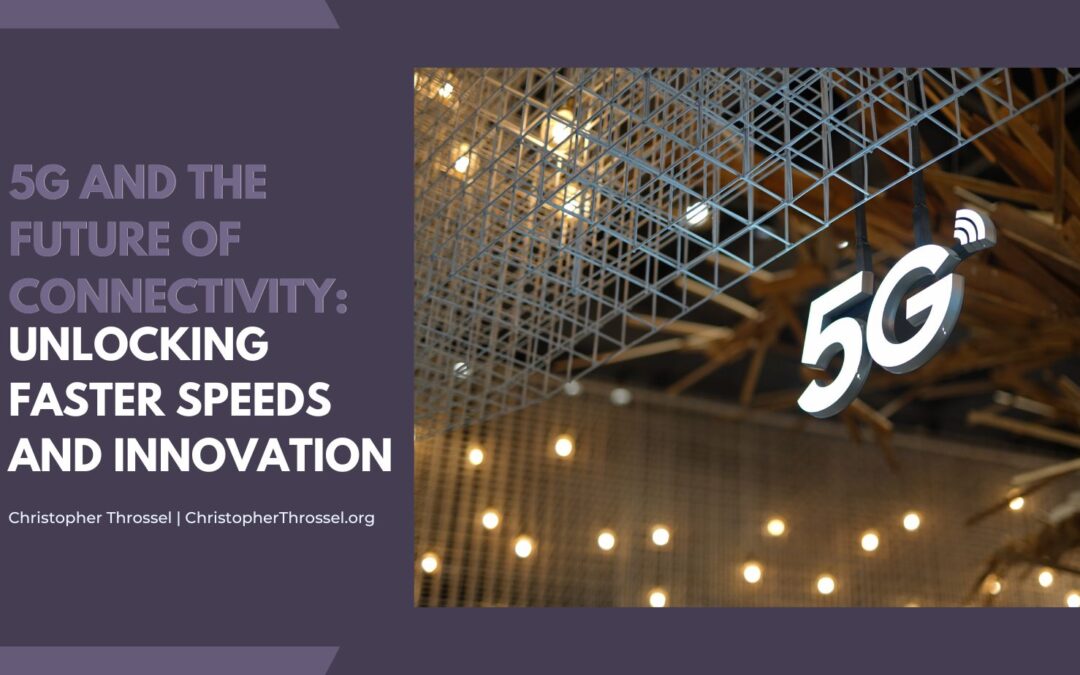Technology is evolving at an unprecedented pace, and at the forefront of this revolution is the fifth generation of wireless technology, 5G. As we rely more heavily on digital communication and data exchange, the need for faster and more reliable connectivity becomes increasingly evident. Let’s discuss how 5G is poised to shape the future of connectivity by unlocking faster speeds and fostering innovation across various industries.
The Need for 5G
In order to understand the significance of 5G, it’s essential to recognize the limitations of its predecessor, 4G. While 4G significantly improved mobile connectivity, it fell short of meeting the growing demands of our digitally-driven world. With the proliferation of smartphones, IoT devices, and the rise of data-intensive applications such as augmented reality (AR), virtual reality (VR), and autonomous vehicles, our current wireless infrastructure is reaching its limits.
5G promises to address these challenges by providing faster speeds, lower latency, and increased network capacity. With speeds up to 100 times faster than 4G, 5G enables near-instantaneous downloads, smoother streaming, and seamless communication between devices. This leap in connectivity is a game-changer for both consumers and businesses.
Faster Speeds for Consumers
One of the most tangible benefits of 5G for consumers is the remarkable increase in download and upload speeds. 5G can enable you to download an entire HD movie in seconds, stream 4K videos without buffering, and experience online gaming with minimal lag. This opens up a world of possibilities for entertainment, education, and productivity, as it eliminates the frustration of waiting for content to load or downloads to complete.
Moreover, the enhanced speed of 5G enables the widespread adoption of immersive technologies like AR and VR. These technologies need massive amounts of data to create realistic and interactive experiences. With 5G’s high-speed, low-latency connection, AR and VR applications can reach their full potential, revolutionizing the gaming, healthcare, and education industries.
Empowering IoT and Smart Cities
The Internet of Things (IoT) is quickly becoming integral to our daily lives, with smart devices infiltrating our homes, workplaces, and cities. However, for IoT to reach its full potential, it requires a robust and reliable network infrastructure, which 5G provides. 5G’s low latency and high capacity make it ideal for connecting and managing many IoT devices, from smart thermostats and fitness trackers to autonomous vehicles and connected industrial machines.
The future arrival of smart cities, 5G, can pave the way for improved public services, traffic management, and environmental monitoring. With real-time data collection and analysis made possible by 5G, cities can optimize resource allocation, reduce traffic congestion, enhance public safety, and reduce their environmental footprint.
Enabling Remote Work and Telemedicine
The COVID-19 pandemic quickened the adoption of remote work and telemedicine, highlighting the importance of reliable and high-speed connectivity. With 5G, remote work becomes even more viable, as employees can seamlessly access company networks and applications from home or anywhere. Video conferencing and collaboration tools function smoothly, fostering productivity and collaboration among remote teams.
Telemedicine, too, stands to benefit significantly from 5G. Remote patient monitoring, high-definition video consultations, and real-time data transmission between medical devices and healthcare providers have become more feasible, improving patient healthcare access and reducing the strain on healthcare infrastructure.
Fueling Innovation in Industry
Beyond consumer applications, 5G will spark innovation in various industries, including manufacturing, transportation, and agriculture. In manufacturing, the low latency of 5G allows for real-time monitoring and control of robotic systems, leading to more efficient production processes and safer working environments.
In transportation, 5G plays a crucial role in developing autonomous vehicles. The low latency and high-speed connectivity enable vehicles to communicate with each other and infrastructure, making roads safer and transportation more efficient. Additionally, the logistics industry can benefit from real-time tracking and monitoring of shipments, reducing delays and optimizing routes.
5G can enhance precision farming in agriculture by using drones and IoT sensors to monitor soil conditions, crop health, and irrigation needs. This data-driven approach can lead to higher crop yields and more sustainable farming practices.
5G technology is not just an incremental improvement in wireless connectivity; it’s a game-changer that reshapes our lives and works. As 5G networks continue to grow and mature, we can expect unprecedented connectivity and innovation, ushering in a future that was once the stuff of science fiction.

